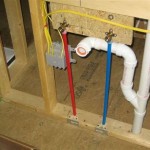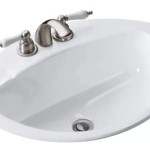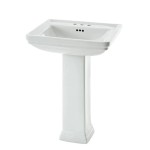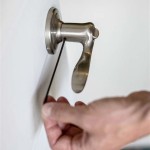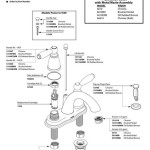How To Fit A New Bathroom Extractor Fan
A bathroom extractor fan is a crucial component in any modern bathroom, serving to remove excess moisture and prevent the build-up of mold and mildew. This is particularly important given the humid environment commonly associated with showering and bathing. Over time, extractor fans can become noisy, inefficient, or simply stop working altogether. Replacing an old extractor fan with a new one is a task that can be undertaken by many homeowners with a moderate level of DIY experience. This article provides a comprehensive guide on how to fit a new bathroom extractor fan, ensuring proper ventilation and a healthier bathroom environment.
Before embarking on the installation process, it is paramount to prioritize safety. Working with electricity can be hazardous, and therefore, the electrical supply to the extractor fan circuit must be completely isolated. This involves turning off the corresponding circuit breaker at the main consumer unit (fuse box). The breaker should be clearly labelled to prevent accidental re-energization while work is in progress. A voltage tester should be used to confirm that the power is indeed off at the fan's wiring connections before proceeding. This simple step can significantly reduce the risk of electric shock.
Furthermore, it is essential to wear appropriate personal protective equipment (PPE) such as safety glasses to protect the eyes from dust and debris, and gloves to provide insulation and grip. Working at heights, even when using a stepladder, requires caution and awareness. Ensure the ladder is stable and positioned on a level surface. Take breaks as needed to avoid fatigue, which can increase the risk of accidents.
Key Point 1: Preparation and Removal of the Old Fan
The initial phase of fitting a new bathroom extractor fan involves careful preparation and the safe removal of the existing unit. This requires gathering the necessary tools and materials and understanding the wiring configuration of the old fan.
Gathering Tools and Materials: Before starting, ensure all the required tools and materials are readily available. This includes a stepladder for accessing the fan, a screwdriver set (including both flathead and Phillips head screwdrivers), wire strippers, wire connectors (such as terminal blocks or push-fit connectors), a voltage tester, safety glasses, gloves, a pencil, a measuring tape, and the new extractor fan itself. It is also advisable to have a dust sheet or protective covering to minimize mess.
Inspection of the Existing Fan: Carefully inspect the existing extractor fan to understand its mounting method and wiring configuration. Take photographs of the wiring connections before disconnecting anything. This serves as a valuable reference point when connecting the new fan. Note the type of wiring used (e.g., three-core and earth) and the color coding of the wires (e.g., brown for live, blue for neutral, green/yellow for earth). This information is critical for ensuring correct wiring of the new fan.
Disconnecting the Old Fan: With the power safely isolated, carefully disconnect the old extractor fan. Start by removing the fan cover or grille, which is typically held in place by screws or clips. Once the cover is removed, disconnect the wiring connections. Use wire strippers to carefully expose fresh ends of the wires. Loosen the screws on the terminal block or connector and detach the wires one by one. Label each wire with masking tape and a marker to indicate its original position (e.g., "Live," "Neutral," "Earth"). This helps prevent confusion during the reconnection process.
Removing the Old Fan Housing: Once the wiring is disconnected, the fan housing can be removed. Depending on the type of fan, it may be secured with screws, clips, or adhesive. Carefully remove any screws or clips holding the housing in place. If the fan is glued, gently use a putty knife or similar tool to break the adhesive bond. Be careful not to damage the surrounding ceiling or wall. Once the housing is free, carefully lower it and dispose of it responsibly.
Cleaning the Area: After removing the old fan, clean the surrounding area to remove any dust, debris, or old sealant. This ensures a clean surface for mounting the new fan. Use a brush or vacuum cleaner to remove loose particles. If necessary, use a damp cloth to wipe down the surface.
Key Point 2: Preparing for Installation of the New Fan
Before installing the new extractor fan, it is crucial to ensure that it is the correct size and type for the bathroom and that the existing ductwork is compatible. This involves checking the fan specifications, making any necessary adjustments to the ductwork, and preparing the mounting location.
Checking Fan Specifications: Verify that the new extractor fan is suitable for the size of the bathroom. Extractor fans are rated based on their airflow capacity, measured in cubic feet per minute (CFM). A larger bathroom requires a fan with a higher CFM rating. Consult a ventilation guide or online calculator to determine the appropriate CFM rating for the bathroom's dimensions. Also, check that the fan is compatible with the existing electrical supply (typically 230V AC). Finally, ensure that the fan complies with relevant building regulations, particularly those pertaining to electrical safety and ventilation.
Compatibility with Existing Ductwork: Inspect the existing ductwork to ensure that it is in good condition and compatible with the new fan. The ductwork should be free from obstructions, such as kinks or crushed sections, which can restrict airflow. If the ductwork is damaged, it should be repaired or replaced. Also, check that the diameter of the ductwork matches the outlet of the new fan. If the diameters are different, use a reducer or adapter to ensure a tight and secure connection. Consider replacing flexible ducting with rigid ducting for improved airflow efficiency. Rigid ducting offers less resistance to airflow and is less prone to kinking.
Preparing the Mounting Location: Prepare the mounting location for the new extractor fan. If the new fan is a different size or shape than the old one, it may be necessary to enlarge or modify the opening in the ceiling or wall. Use a pencil to mark the outline of the new fan on the mounting surface. Carefully cut the opening to the required size using a drywall saw or similar tool. Ensure that the opening is clean and free from any obstructions. If necessary, reinforce the mounting surface with additional supports to provide a secure base for the fan.
Wiring Considerations: Review the wiring diagram provided with the new extractor fan. This diagram illustrates the correct wiring connections for the fan's various functions. Compare the wiring diagram to the photographs taken of the old fan's wiring connections. This helps ensure that the new fan is wired correctly. If the wiring is damaged or frayed, replace it with new wiring of the same gauge and type. Ensure that the wiring is long enough to reach the fan's terminal block or connector. If necessary, use wire connectors to extend the wiring.
Key Point 3: Installing and Testing the New Fan
This final stage involves securely mounting the new extractor fan, connecting the wiring, and testing the fan to ensure proper operation. It's important to double-check connections and follow the manufacturer's instructions carefully.
Mounting the New Fan: Carefully position the new extractor fan in the prepared mounting location. Align the fan with the opening and secure it in place using screws, clips, or adhesive, depending on the type of fan and the manufacturer's instructions. Ensure that the fan is level and securely attached to the mounting surface. If necessary, use shims to level the fan. Double-check that the fan is securely mounted before proceeding to the next step.
Connecting the Wiring: Connect the wiring to the new extractor fan according to the wiring diagram. Match the colored wires (brown for live, blue for neutral, green/yellow for earth) to the corresponding terminals on the fan's terminal block or connector. Use wire connectors to securely join the wires. Ensure that the connections are tight and that no bare wires are exposed. Double-check the wiring connections to ensure that they are correct. Incorrect wiring can damage the fan or create a safety hazard.
Connecting the Ductwork: Connect the ductwork to the outlet of the new extractor fan. Secure the ductwork to the fan using duct tape or a clamp. Ensure that the connection is airtight to prevent air leakage. Seal any gaps or cracks with duct sealant. Check that the ductwork is properly supported and that it does not sag or kink. Ensure that the ductwork vents to the outside of the building and that it is not blocked by any obstructions.
Testing the New Fan: After completing the installation, turn the power back on at the circuit breaker. Test the new extractor fan to ensure that it is working properly. Turn on the fan and check that it is extracting air effectively. Listen for any unusual noises or vibrations. If the fan is not working properly, turn off the power immediately and recheck the wiring connections and ductwork. If the fan is working properly, replace the fan cover or grille. Ensure that the cover is securely attached to the fan housing. Clean up any mess or debris created during the installation process. Dispose of any waste materials responsibly.
Final Checks: Once the installation is complete, perform a final check to ensure that everything is in order. Check that the fan is securely mounted, that the wiring connections are tight, and that the ductwork is properly connected. Ensure that the fan is operating quietly and efficiently. Monitor the bathroom for any signs of moisture build-up. If any problems are detected, take corrective action immediately.

Installing A Bathroom Extractor Fan Diy Instructions Wave Electrical Solutions

How To Install An Inline Duct Fan

Bathroom Extractor Fans A Diy Guide

How To Fit A Bathroom Fan Using Independent Switch Extractor Installation Xpelair Dx100t

How To Wire Bathroom Fan Extractor With Timer And Isolator

What Extractor Fan Do I Need For My Bathroom Blog World

How To Install An Extractor Fan Through A Wall

Extractor Fan Wiring Diywiki

How To Install An Extractor Fan

How To Install A Bathroom Exhaust Fan Step By Guide
Related Posts
